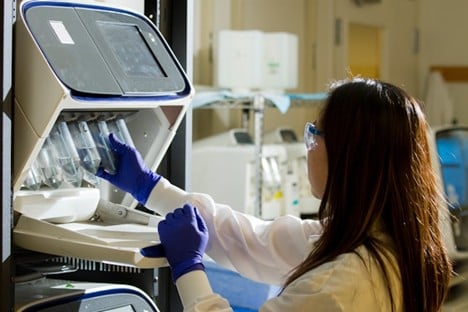The life sciences sector is moving at an unprecedented pace, with discoveries in genomics, immunology, drug development, and diagnostics reshaping healthcare every year. Yet while scientific breakthroughs are accelerating, the talent pipeline has not always kept up with the demands of industry. This mismatch creates challenges for both graduates and employers. Many highly trained PhDs and postdocs find themselves struggling to transition into private-sector roles, while companies compete fiercely for individuals who can apply deep scientific expertise to real-world product development. One area where this challenge is especially visible is biotech recruiting, where companies often struggle to find candidates who are not only technically brilliant but also equipped with the practical skills to succeed in a commercial environment.
Why Academic and Industry Worlds Diverge
Universities and research institutes are structured to prioritize discovery, not commercialization. Graduate students and postdoctoral fellows are trained to explore questions in depth, publish findings, and pursue knowledge for its own sake. Success in academia is often measured by peer-reviewed publications, grants, and teaching contributions. By contrast, industry values outcomes such as product viability, regulatory compliance, scalability, and profitability.
This divergence creates a skills gap. A molecular biologist who has spent years mastering CRISPR technology in the lab may not have experience with quality management systems, clinical trial design, or cross-functional collaboration with engineers and marketers. The result is that employers sometimes hesitate to hire academic candidates without industry exposure, while candidates feel underprepared or frustrated when their expertise does not directly align with job descriptions.
The Consequences of the Talent Gap
The impact of this disconnect extends beyond individual job seekers. For companies, the inability to secure the right talent slows innovation, delays timelines for drug and device development, and increases costs. For the broader biotech and pharma ecosystem, a shortage of industry-ready professionals threatens competitiveness, especially as global markets expand and other regions invest heavily in life sciences infrastructure.
On the academic side, this gap can lead to disillusionment. Many postdoctoral researchers find limited tenure-track positions and uncertain career prospects. Without guidance on how to pivot into industry, they risk underemployment or leaving the field altogether, representing a loss of valuable scientific expertise.
What Employers Look For Beyond Technical Expertise
To succeed in biotech and pharma, technical mastery is only one part of the equation. Employers consistently highlight the importance of complementary skills that are often underemphasized in academic training. These include project management, regulatory awareness, intellectual property considerations, and business communication.
For example, a scientist working in a pharmaceutical company may need to translate complex findings into reports that can be understood by regulators or corporate stakeholders. Similarly, collaboration with cross-disciplinary teams – engineers, clinicians, data scientists – requires a mindset oriented toward teamwork rather than individual achievement. Without these competencies, even the most talented researchers may struggle to adapt.
The Role of Training and Professional Development
Bridging this gap requires deliberate interventions. Professional development programs that expose academic researchers to industry practices are growing in importance. Universities are beginning to implement workshops and certificate programs that teach students about drug development pipelines, good laboratory practices (GLP), and regulatory frameworks.
Internships and industry-sponsored projects also play a key role. These opportunities allow graduate students and postdocs to gain firsthand experience in environments where the pace, priorities, and expectations differ from academia. In turn, employers gain early access to talent they can shape for long-term needs.
Another emerging strategy is the rise of “soft landing” programs sponsored by industry associations or government agencies. These initiatives provide mentorship, networking, and targeted training for scientists who want to transition into private-sector roles. By equipping candidates with transferable skills, they help smooth the path from bench research to product development.
Collaboration Between Academia and Industry
One of the most effective ways to address the gap is through stronger collaboration between universities and companies. Joint research projects, industry-funded labs, and technology transfer partnerships not only advance science but also expose students to the commercial side of innovation.
For example, when graduate students work on a project funded by a pharmaceutical company, they gain exposure to milestones and deliverables that mirror industry standards. Similarly, faculty partnerships with biotech firms can create mentorship pipelines, where students receive guidance not only on scientific methods but also on practical career preparation.
Technology transfer offices, which already serve as bridges for intellectual property and commercialization, can also play a more active role in career development. By facilitating internships and networking with corporate partners, they help ensure that students are prepared for diverse career paths.
The Recruiter’s Perspective
Headhunters see both sides of the equation: the highly skilled candidates eager to contribute and the companies in search of specific competencies. Their role often involves identifying transferable skills that employers may overlook.
A candidate who has managed a lab with multiple graduate students and complex budgets may not list “project management” on their CV, but in practice, they have developed precisely that skill. Recruiters can help candidates reframe their academic experience in terms that resonate with industry hiring managers. At the same time, recruiters can advise companies to broaden their criteria and consider training candidates who bring scientific depth, even if they lack direct industry experience.

Emerging Trends in Talent Development
Several broader trends are influencing how the gap between academia and industry is being bridged. The first is the integration of data science into life sciences. Increasingly, employers are seeking candidates who combine biological expertise with computational skills. Universities that incorporate bioinformatics training into graduate programs give their students a competitive edge.
Second, globalization of talent is changing the equation. With research collaborations spanning continents, companies are recruiting internationally, and candidates must be ready to operate in diverse, cross-cultural teams. This requires adaptability and cultural intelligence, areas that can be fostered through international fellowships and exchange programs.
Third, the rise of entrepreneurship in life sciences is providing new pathways. Graduate students and postdocs are increasingly launching startups around their research, gaining firsthand experience with commercialization. Even if they later transition to established companies, this entrepreneurial exposure helps them understand the business imperatives of the industry.
Building a Sustainable Pipeline
Ultimately, solving the talent gap requires sustained effort across multiple fronts. Academic institutions must evolve curricula to better reflect industry needs without compromising scientific rigor. Employers must recognize the potential of academic candidates and invest in onboarding and training rather than expecting immediate readiness. Recruiters, associations, and policymakers must collaborate to create ecosystems where career transitions are smooth and opportunities are transparent.
The goal is not to diminish the value of academic research but to ensure that the flow of talent between academia and industry is seamless. By aligning incentives and building bridges, both sectors benefit: academia continues to generate groundbreaking knowledge, and industry ensures that this knowledge is translated into therapies, devices, and diagnostics that improve lives.
Closing the Divide Between Discovery and Delivery
The gap between academic research and industry talent needs is not insurmountable, but it requires recognition, cooperation, and deliberate strategies. Scientists are some of the most highly trained professionals in the world, yet their skills must be translated into the language of product development, regulation, and commercialization. By fostering collaboration, providing targeted training, and reframing how we value scientific experience, the biotech and pharma sectors can unlock an immense reservoir of talent.
The stakes are high. The ability to bring life-saving drugs, medical devices, and diagnostics to market depends not only on scientific discovery but also on the people capable of carrying those discoveries across the finish line. Bridging the divide between academia and industry is therefore not just a workforce issue, it is a matter of global health, innovation, and progress.


